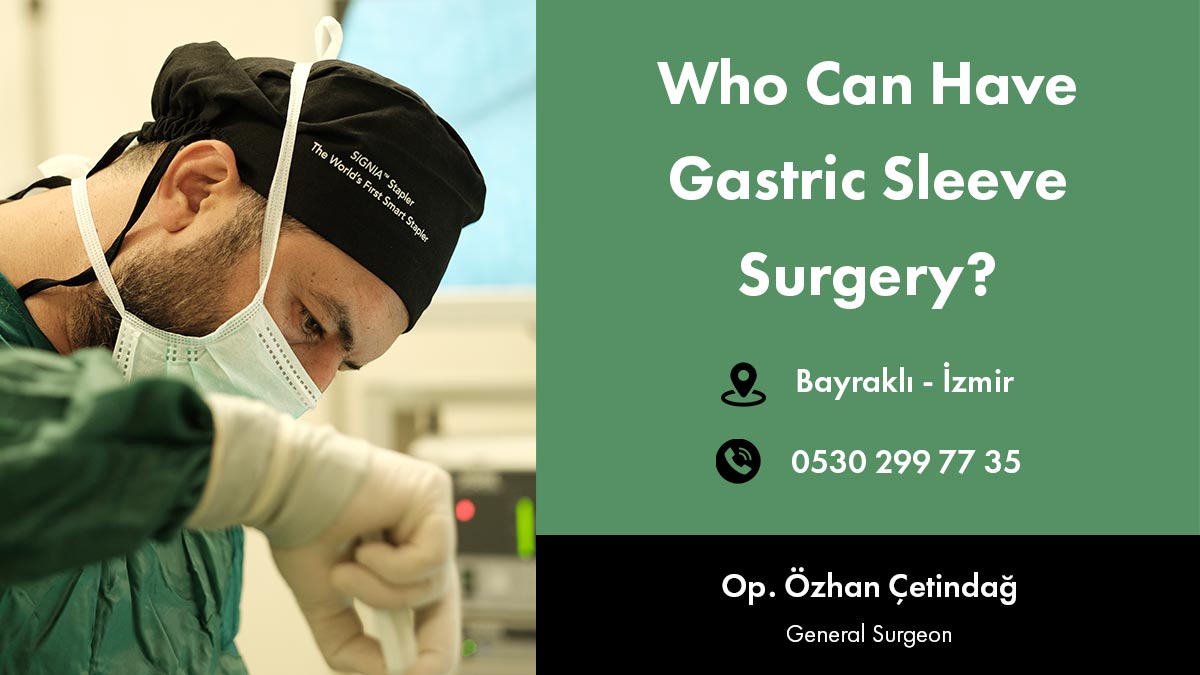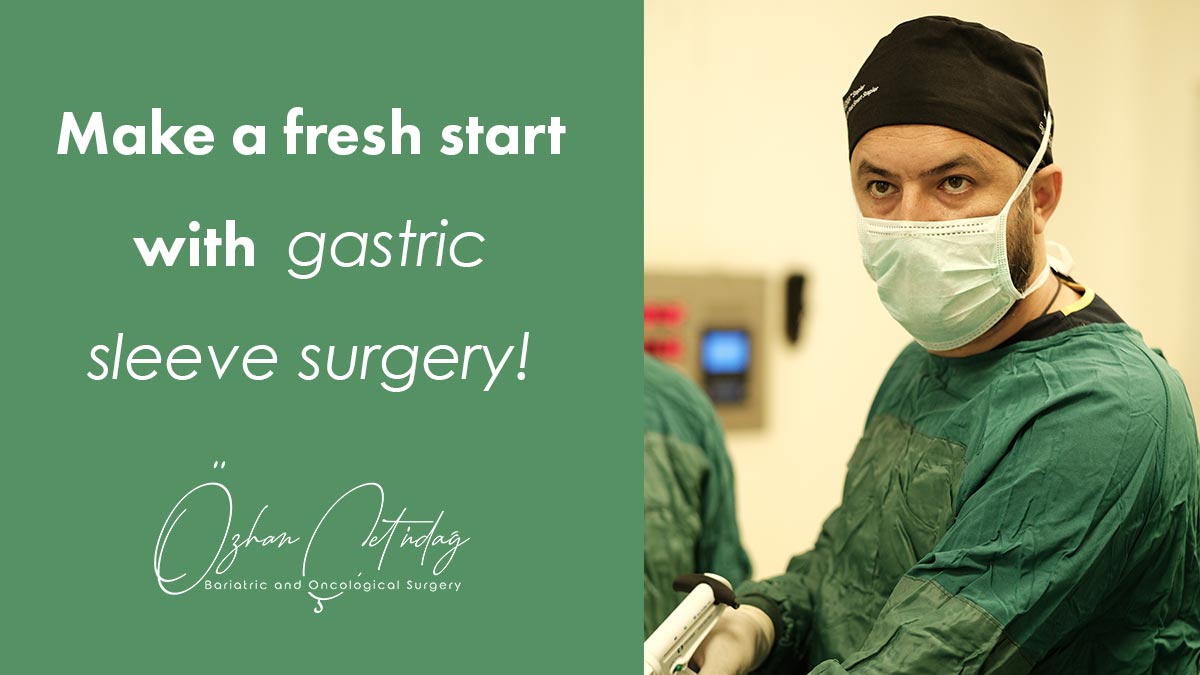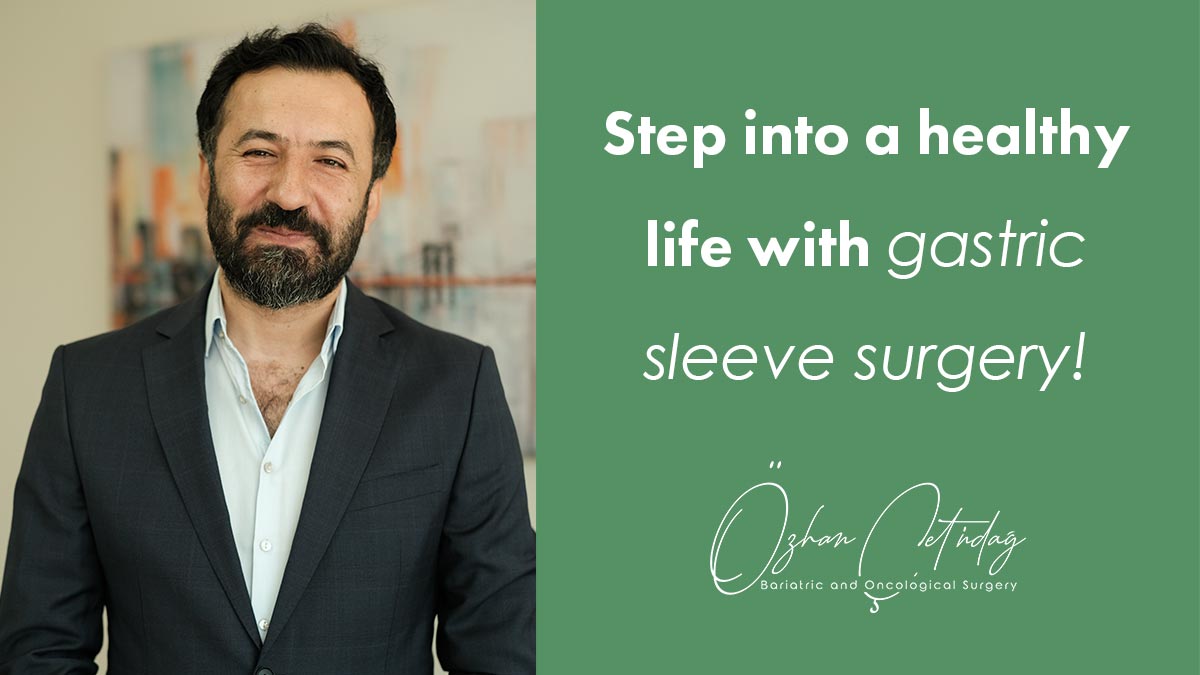Who Can Have Sleeve Gastrectomy?

Sleeve gastrectomy has an important place in the treatment of obesity. This method, which comes to the fore for people who cannot lose weight through dieting and drug treatments, is one of the effective treatment methods for obesity. Sleeve gastrectomy, also called gastric sleeve surgery, is based on surgically reducing the stomach volume and shaping it into a tube. With the shrinked stomach volume, it is aimed for people to be satisfied with smaller portions and thus create a serious deficit in daily consumption. With the decrease in calorie intake, patients are enabled to lose weight. Removing a certain part of the stomach also affects the release of hunger hormones, and people produce less amounts of hunger hormones. This supports easier appetite control.
In order to have gastric sleeve surgery, certain criteria must be met. In the preliminary meeting with a doctor specialized in bariatric surgery, it is evaluated whether the patients are suitable for surgery. By evaluating body mass index, presence of chronic diseases and various blood parameters, the doctor determines the patient’s suitability for surgery.
Who Can Have Gastric Sleeve Surgery?
People who want to have sleeve gastrectomy surgery are first evaluated by a doctor. In order to have sleeve gastrectomy surgery, people must first have a body mass index of 35 and above. This value, calculated by dividing the kilogram by the square of the height in meters, gives the person’s body mass index. In addition to the criterion of having a body mass index of 35 and above, stomach reduction surgery can be applied to the following people.
- People who cannot lose weight with diet
- People who cannot control their appetite
- People for whom exercise and diet are insufficient to lose weight
- People who quickly regain the weight they lost
- People with metabolic syndrome such as type 2 diabetes, hypertension or hypercholesterolemia
In some cases, within the scope of doctor’s evaluations, stomach reduction surgery can be applied to people whose body mass index is over 30 and who meet some of the mentioned criteria. The ideal age for sleeve gastrectomy is considered to be between 18 and 65 years old. In some special cases, gastric sleeve surgery may be considered for individuals over the age of 70.

Who Is Not Suitable for Stomach Reduction Surgery?
When evaluating whether a person can have stomach reduction surgery, the patient’s medical condition is examined. People with heart disease, liver and kidney problems are not suitable for stomach reduction surgery. Serious medical complications may develop due to these diseases.
If the patient has an active infectious condition, it may negatively affect the surgery process. In such cases, treatments are first applied for the patient’s recovery. If the patient’s infection condition improves, the patient may be evaluated for sleeve gastrectomy again.
Gastric sleeve surgery is not recommended for cancer patients or people with a recent history of cancer.
If you have had previous abdominal surgery or sleeve gastrectomy, this may make it difficult to perform the surgery. In such cases, the patient may not undergo surgery to prevent a negative complication.
Stomach reduction surgery is not performed during pregnancy and breastfeeding periods. After a certain period of pregnancy, people who wish can be re-evaluated.
Stomach reduction surgery is performed under general anesthesia. People who have allergies to anesthesia may not have surgery for this reason.
Stomach reduction surgery is not performed on drug and alcohol addicts.
How is Gastric Sleeve Surgery Performed?
Gastric sleeve surgery is performed under general anesthesia. In the surgery, approximately 80% of the stomach is removed. The stomach, which is reshaped in a tube-like manner, has a very small volume after the surgery. Surgery is performed with laparoscopic techniques.
For a laparoscopic surgery, small incisions of 1-1.5 centimeters are made in the abdominal area. Through a camera at the end of the devices, the doctor can see the internal organs and perform the surgery. Laparoscopy devices are directed towards the stomach through these incisions. In order to prevent the stomach from becoming too small, a calibration tube is placed at the stomach entrance. In this way, the connection between the esophagus and stomach can be restored correctly. To prevent bleeding, special cutting and stitching tools are used. After the stomach is cut and reshaped, the excess part is removed from the body and the surgery is completed. Since the incisions are quite small, the surgery does not cause any aesthetic problems.
How is the Post-Operative Process?
In order to achieve the expected success from sleeve gastrectomy surgery, patients must be careful in the postoperative period. First of all, following the diet lists prepared under the control of the doctor and dietician is closely related to the success of the surgery. Patients are usually fed a liquid diet in the first 10 days after surgery. If the doctor deems it appropriate, a switch is made from liquid foods to soft foods with a puree consistency. After tolerating soft foods, a semi-solid diet can be introduced slowly, and then a return to normal nutrition can be made. However, care must be taken to ensure that the food consumed is nutritious and healthy. The nutrition process should be determined step by step and speacial care should be taken during this process.

